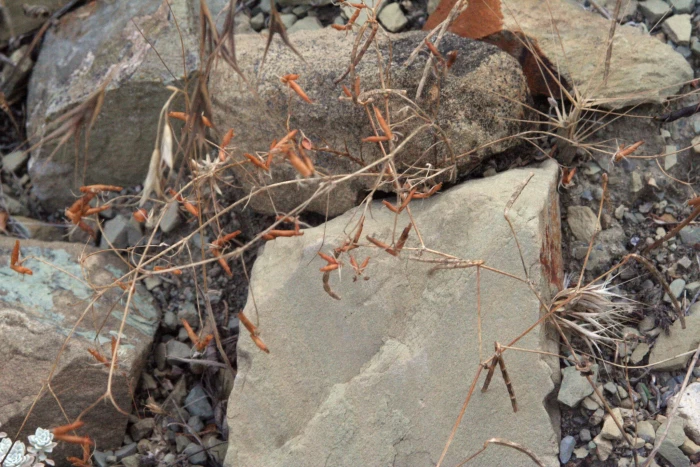Lentil Vetch
(Vicia lentoides)
Lentil Vetch (Vicia lentoides)
/
/

© Oleg Kosterin
CC BY 4.0
Image By:
© Oleg Kosterin
Recorded By:
Copyright:
CC BY 4.0
Copyright Notice:
Photo by: © Oleg Kosterin | License Type: CC BY 4.0 | License URL: http://creativecommons.org/licenses/by/4.0/ | Uploader: oleg_kosterin | Publisher: iNaturalist |




Estimated Native Range
Climate Requirements for Rochester Hills, Michigan
| This Plant | Your Site | Plant Suitability for Your Location | ||
|---|---|---|---|---|
| • Precipitation | 10" - 64" | 31" | Your precipitation may be too high for this plant. | Too high |
| • High Temp. | 61°F - 104°F | 83°F | Your summer temperatures are normal for this plant. | Excellent |
| • Low Temp. | 14°F - 58°F | 16°F | Your winter temperatures are normal for this plant | Excellent |
This plant may not grow well at your location - your precipitation is too high.
Summary
Vicia lentoides, commonly known as Lentil Vetch, is a perennial herb native to the Mediterranean region, specifically thriving in grasslands, open woodlands, and scrub areas. It typically grows at a moderate rate to a height of 1-2 feet (0.3-0.6 meters) and a width of 1-1.5 feet (0.3-0.5 meters). Lentil Vetch has compound leaves with multiple leaflets and bears racemes of pink or white flowers that bloom in the spring, adding a subtle charm to garden spaces. The flowers are not particularly showy but are appreciated for their delicate appearance.
Lentil Vetch is valued for its nitrogen-fixing abilities, which can improve soil fertility, making it a beneficial plant for restoration projects and organic gardens. It is often used in wildflower meadows, as a cover crop, or in naturalized areas where it can provide erosion control. This plant is drought-tolerant once established and requires low amounts of water, making it suitable for xeriscaping. It thrives in full sun to part shade and adapts well to a variety of soil types, including clay, loam, or sandy soils with medium to fast drainage. While generally disease-resistant, Lentil Vetch can be susceptible to root rot in poorly drained soils.CC BY-SA 4.0
Lentil Vetch is valued for its nitrogen-fixing abilities, which can improve soil fertility, making it a beneficial plant for restoration projects and organic gardens. It is often used in wildflower meadows, as a cover crop, or in naturalized areas where it can provide erosion control. This plant is drought-tolerant once established and requires low amounts of water, making it suitable for xeriscaping. It thrives in full sun to part shade and adapts well to a variety of soil types, including clay, loam, or sandy soils with medium to fast drainage. While generally disease-resistant, Lentil Vetch can be susceptible to root rot in poorly drained soils.CC BY-SA 4.0
Plant Description
- Plant Type:
- Height: 1-2 feet
- Width: 1-1.5 feet
- Growth Rate: Moderate
- Flower Color: Pink, White
- Flowering Season: Spring
- Leaf Retention:
Growth Requirements
- Sun: Full Sun, Part Shade
- Water: Low
- Drainage: Fast, Medium
Common Uses
Bee Garden, Bird Garden, Low Maintenance
Natural Habitat
Native to grasslands, open woodlands, and scrub areas in the Mediterranean region
Other Names
Common Names:
Scientific Names: Vicia lentoides , Ervum dalmaticum , Ervum lentoides , Ervum nigricans , Ervum sylvaticum , Ervum villosum , Lathyrus nigricans , Lens biebersteinii , Lens cordata , Lens culinaris subsp. nigricans
GBIF Accepted Name: Vicia lentoides